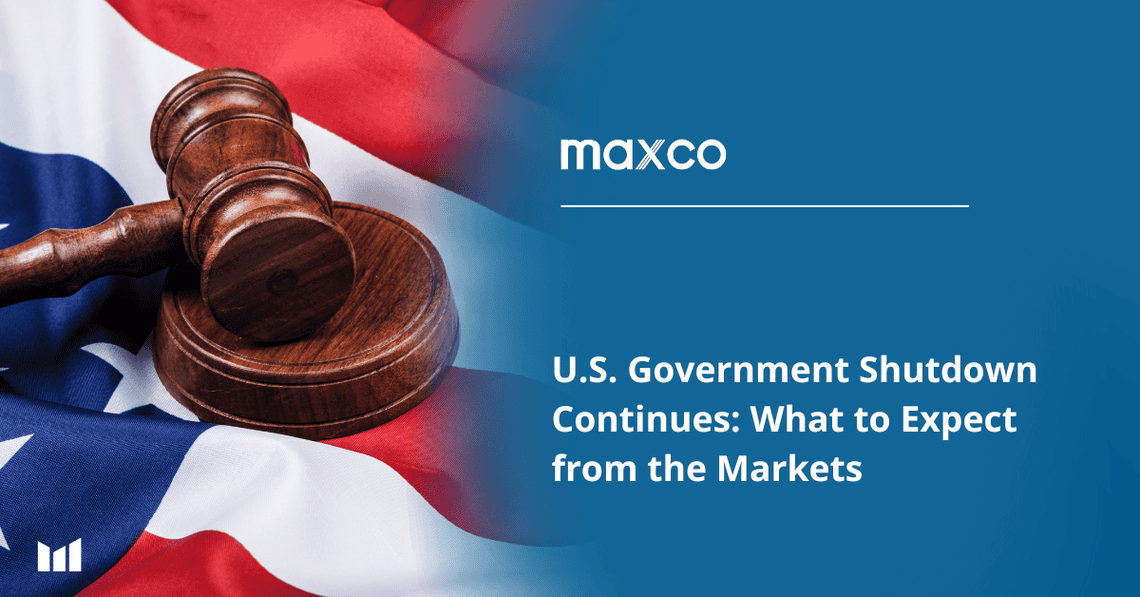Tonight, global market attention once again turns to Washington. The U.S. government officially enters its second day of shutdown after Congress failed to approve a budget. Around 800,000 federal employees are forced into unpaid leave, while more than 700,000 others continue working without pay, adding uncertainty to an already fragile global economic outlook.
Shutdown Overview
The federal government ceased operations on October 1, 2025, because Congress has not approved either the annual budget or a temporary resolution.
- About 800,000 federal employees are furloughed, while another 700,000 continue to work without immediate pay—though the law guarantees back pay once the shutdown ends.
- Healthcare funding regulations—particularly tax subsidies for insurance premiums under the Affordable Care Act (ACA)—are a major point of contention.
- Shutdown does not mean all government activities stop: “essential” services (such as security, military, and some basic public functions) continue, but many administrative functions (procurement, licensing, most non-essential services) are disrupted or suspended.
Economic Impact & Macro Risks
Key points to monitor:
| Category | Impact / Risk | Estimates / Notes |
|---|---|---|
| GDP Growth | Prolonged shutdown may drag down economic growth | White House estimates losses of US$15 billion per week if shutdown continues. EY-Parthenon calculates ~US$7 billion per week, equivalent to ~0.1 percentage point of Q4 growth lost per week of shutdown. |
| Consumer & Business Confidence | Delayed government services, political and fiscal uncertainty may erode confidence | Past surveys show consumer confidence drops significantly during prolonged shutdowns |
| Economic Data & Monetary Policy | Key economic data (jobs, inflation, manufacturing activity) could be delayed or not released | This complicates the Fed’s decision-making on interest rates |
| Government Costs & Debt | While debt payments (bond coupons) are not immediately affected, U.S. credit ratings could be pressured | Credit agencies warn shutdowns worsen perceptions of U.S. fiscal stability |
| Permanent Effects & Lost Output | Prolonged shutdowns historically cause permanent losses due to delayed investments, canceled projects, and confidence erosion | CBO estimated US$3 billion in permanent losses from the 2018–2019 35-day shutdown |
Key risk: duration. If it lasts only a few days, markets may tolerate it. If it extends beyond 2–3 weeks, significant pressure is likely.
Market Implications & Investor Behavior
- Equities: Historically, shutdowns elicit moderate market reactions if seen as temporary political disputes. However, sectors reliant on government contracts (defense, infrastructure, research, public services) could face greater stress. If shutdown persists, risk sentiment may drive capital rotation into safe-haven assets or defensive stocks.
- Bonds & Yields: Political risk and fiscal uncertainty may push U.S. bond yields higher, but often yields actually decline as investors flock to U.S. Treasuries. If confidence in U.S. fiscal management erodes, risk premiums could rise.
- U.S. Dollar: The dollar may weaken if investors question fiscal stability or shift funds to “safer” currencies (yen, Swiss franc). However, as the global reserve currency, downside pressure may be limited unless the crisis escalates.
- Safe-Haven Assets: Gold and other safe assets may see inflows as investors seek protection from volatility. Early reports already show record gold prices amid strong safe-haven demand.
- Volatility & Policy Risks: Without fresh macro data, markets could be “flying blind,” heightening the risk of overreactions to small news or rumors. If the Fed makes policy decisions without adequate data, the chance of missteps increases.
4. Conclusion & Key Monitoring Factors
The U.S. government shutdown poses real risks to the economy and markets, particularly if prolonged, though it will not be immediately catastrophic unless it escalates into a broader fiscal or debt crisis. Markets will closely watch the duration of the shutdown, Congressional negotiations, and monetary policy responses.
Key factors to monitor in the coming days:
- Political updates and negotiation progress — will a temporary funding bill or quick compromise be reached?
- Estimated shutdown duration — days or extended weeks?
- Treasury yields and bond market signals — sharp spikes or flight-to-quality flows?
- Gold prices and other safe-haven moves — any significant surge?
- Performance of government-dependent sectors (public contracts, defense, infrastructure)
- Fed policy signals — particularly if data releases are delayed
- Private surveys and non-official reports — as substitutes for missing government data
By Ade Yunus
Global Market Strategies
